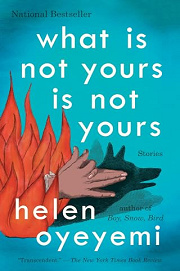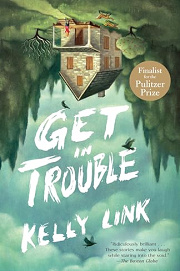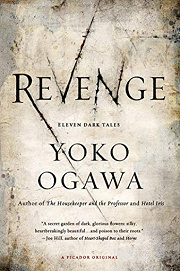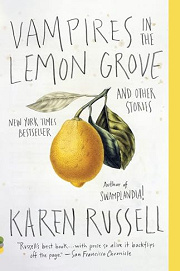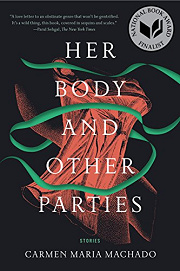Share your thoughts in a quick Shelf Talk!
What Is Not Yours Is Not Yours by Helen Oyeyemi
Keys, doors, and the mysteries they unlock thread through a suite of modern fables where love and identity shape-shift. Luminous and sly, What Is Not Yours Is Not Yours invites you into rooms you didn’t know you were missing—and leaves them echoing after you close the book.
Have you read this book? Share what you liked (or didn’t), and we’ll use your answers to recommend your next favorite read!
Love What Is Not Yours Is Not Yours but not sure what to read next?
These picks are popular with readers who enjoyed this book. Complete a quick Shelf Talk to get recommendations made just for you! Warning: possible spoilers for What Is Not Yours Is Not Yours below.
In What Is Not Yours Is Not Yours, did you enjoy ...
... the dreamy, rule-bending magic?
Get in Trouble by Kelly Link
If the key-and-door talismans in “Books and Roses,” the puppets that act with eerie autonomy in “Is Your Blood as Red as This?,” and the saintly visitations in “Dornička and the Saint of the Deep” hooked you, you’ll love Link’s shapeshifting wonders. Stories like “The Summer People” and “The New Boyfriend” unfold with that same sly, uncanny logic—where haunted objects and secret rules press against everyday life—delivering the off-kilter enchantment you enjoyed in What Is Not Yours Is Not Yours.
... shifting perspectives that echo and refract one another?
Revenge by Yoko Ogawa
You liked how Oyeyemi’s narrators slide between tales—the prankish scholars in “A Brief History of the Homely Wench Society,” the online intrigue of “If a Book Is Locked There’s Probably a Good Reason for That, Don’t You Think,” and the lovers circling secrets in “Books and Roses.” Ogawa’s linked stories perform a similar mirroring act: characters drift in and out, motifs reappear with new edges, and each perspective subtly rewires the last, creating the same prismatic thrill.
... subtle magic seeping into everyday life?
Vampires in the Lemon Grove by Karen Russell
If the dictator’s decree in “Drownings” or the campus rituals in “A Brief History of the Homely Wench Society” felt just a step to the left of reality, Russell’s collection will hit that sweet spot. In “Vampires in the Lemon Grove,” ancient creatures nurse cravings in a sunny orchard, and in “Reeling for the Empire,” women transform in ways that feel as intimate and uncanny as the transformations shadowing Oyeyemi’s characters.
... lush, lyrical prose?
The Bloody Chamber by Angela Carter
If you savored the ornate, shimmering sentences threaded through “Books and Roses” and the incantatory feel of tales like “Dornička and the Saint of the Deep,” Carter’s baroque retellings will sweep you away. The title story and “The Tiger’s Bride” revel in jeweled language and sensuous imagery—prose that, like Oyeyemi’s, turns keys in the reader’s imagination and opens trapdoors beneath familiar fairy tales.
... mythic symbolism and fairy‑tale logic?
Her Body and Other Parties by Carmen Maria Machado
If you were drawn to the emblematic keys and doors, the marionettes that seem to carry their own souls, and the fable-dark justice of “Drownings,” Machado channels that same symbolic voltage. “The Husband Stitch” and “Especially Heinous” braid folklore and urban myth into intimate, haunting parables—echoing the way What Is Not Yours Is Not Yours turns everyday desires into talismans and taboos.
Unlock your personalized book recommendations! Just take a quick Shelf Talk for What Is Not Yours Is Not Yours by Helen Oyeyemi. It’s only a few questions and takes less than a minute.
